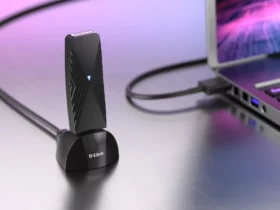During the first six months of 2021, Kaspersky’s honeypots – software that mimics a vulnerable device – detected more than 1.5 billion attacks targeting Internet of Things (IoT) devices: a number doubled compared to the previous half year.
IoT devices such as smartwatches, locks, fitness trackers and many more are now everywhere. According to IoT market analysts, 127 new devices are connected to the Internet every second. Given the large number, these devices attract the attention not only of enthusiastic users but also of cyber criminals.
How are attacks on IoT devices detected?
To track and prevent attacks against smart devices, experts from Kaspersky created honeypots, literally “honey jars”. These are special software that mimics a vulnerable device. Distributed publicly on the Internet, honeypots simulate real devices and function as traps for criminals
computer scientists.
According to the analysis of the data collected by the honeypots created by Kaspersky, there is a steady trend of increasing the number of attacks on IoT devices.
In the first half year 2021 the total number of infection attempts reached 1,515,714,259, while in the previous six months, 639,155,942 were registered. In most cases, connection attempts have
used the telnet protocol (used to access a device and manage it remotely); the rest used SSH and web.
Also the number of IoT attacks coming from Italy 1 has undergone significant growth in the last
period with an increase of 93%. In fact, in the second half of 2020, the number of attacks
recorded amounted to 1,892,200, while in the first half of 2021 the figure doubled,
reaching 3,650,500.
Which IoT devices are being attacked?
“Since IoT devices, like smartwatches and smart home accessories have become an essential part of our daily life, cybercriminals have wisely shifted their attention to this area. We have noticed that the attacks have intensified as user interest in these types of devices has increased. People believe they are not important enough to be a victim of a hacker, but in the last year we have seen a large increase in attacks on IoT devices.. The majority of these
attacks can be prevented, which is why we recommend smart home owners to install one
reliable security solution, which helps them to protect themselves “, commented Dan Demeter, Kaspersky security expert.
How to defend yourself?
Sometimes tricks may be enough, such as these “4 simple moves” recommended by Kaspersky to avoid the increase of attacks. Let’s see what they are:
– Install firmware updates as soon as possible. Once you have located one
vulnerability, this can be resolved through patches contained in the updates;
– Always change the pre-installed passwords. Use strong passwords that include
uppercase and lowercase letters, numbers and symbols;
– Restart a device as soon as you notice abnormal behavior. This may
help eliminate existing malware, but it does not reduce the risk of receiving more;
– Schoose security solutions that help protect IoT ecosystems such as
Kaspersky Smart Home Security. More details on Kaspersky Smart Home Security e
about Kaspersky’s VAS telecommunications offering can be found here.















Leave a Reply
View Comments